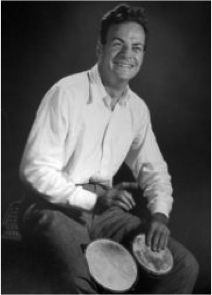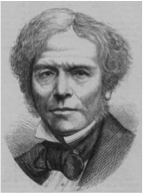Translating deep thinking into common sense
University Education As It Might Be and Ought To Be: Part II

By Marsha Familaro Enright
April 22, 2015
SUBSCRIBE TO SAVVY STREET (It's Free)
In Part I of this series, we looked at how students learn best when they are in a state of Flow— a state of concentration or complete absorption with the activity at hand and the situation. In Part II, we look at creativity.
Integration to Creativity: How to Nurture Creativity
“What I cannot create, I do not understand.”—Richard Feynman
Highly creative people tend to have very broad, as well as deep, interests and knowledge.
Integration of knowledge across broad ranges of subjects is a characteristic of creativity—and versatility. Research consistently finds that highly creative people tend to have very broad, as well as deep, interests and knowledge. They apply unconventional information and ideas to problems, integrating information in unusual ways across conventional subject areas.
 Famed physicist Richard Feynman (at left) is a case in point. Think of his brilliant demonstration of the space shuttle temperature problem, Challenger’s O-Ring: by dropping an O-ring in an ordinary glass of ice water, he simply and directly proved it could not stand up to low temperatures. His demonstration integrated an esoteric, bedeviling engineering problem with a mundane experience.
Famed physicist Richard Feynman (at left) is a case in point. Think of his brilliant demonstration of the space shuttle temperature problem, Challenger’s O-Ring: by dropping an O-ring in an ordinary glass of ice water, he simply and directly proved it could not stand up to low temperatures. His demonstration integrated an esoteric, bedeviling engineering problem with a mundane experience.
He was also famous for his wide-ranging interests, which included samba bands and experiments on ants. He put no limits on his curiosity about the world.
Feynman’s measured IQ was in the high range—124—but not what IQ test-makers consider genius (135+). Contrary to what many people think, but consistent with research findings, most recognized geniuses do not have IQ’s in the 135+ range. Measured IQs of people considered to be geniuses are 116 or higher, apparently making an above-average IQ a condition—but not a sufficient one—for high creativity. (Csikszentmihalyi, Creativity). (No one knows how individuals acclaimed as geniuses because of their work, such as DaVinci and Newton, would have scored on the test. Given the findings with current individuals, the results of an actual IQ test on Newton might surprise us!)
IQ tests don’t adequately measure how intelligence is put into life’s service by creatively solving problems.
Unfortunately, IQ tests—and most tests—cannot measure working creativity and intelligence. In other words, they don’t adequately measure how intelligence is put into life’s service by creatively solving problems. For example, the number of highly creative and successful business people who score average to low on SAT tests is indicative of the test’s inadequacy in measuring working intelligence.
Conditions other than IQ seem to be highly important to the development of creativity, conditions which we can create in educational settings, thereby enabling education to actively develop creativity, rather than stifle it.
 For example, the tendency to amass information from close, first-hand observation is very important. Michael Faraday, (pictured here) exhibited this tendency par excellence as a young man: he had no formal education and knew only arithmetic, but discovered the laws of electromagnetism through fascinated observation of, and experiments on, nature.
For example, the tendency to amass information from close, first-hand observation is very important. Michael Faraday, (pictured here) exhibited this tendency par excellence as a young man: he had no formal education and knew only arithmetic, but discovered the laws of electromagnetism through fascinated observation of, and experiments on, nature.
A mind that is curious and constantly in the problem-solving mode, is another characteristic of the creative. For example, the inventor of VELCRO, George Mestral, noticed that his dog became covered with burrs during a walk. Examining how the burrs use microscopic hooks to stick to the loops of his pant fabric, he realized he could make a new type of fastener. A little nature hike turned into a billion-dollar industry.
What’s needed in education to develop creativity?
“Our care of the [student] should be governed, not by the desire to make him learn things, but by the endeavor always to keep burning within him that light which is called intelligence.”
– Maria Montessori
We cannot change what nature gives students in terms of basic intelligence. However, universities can offer a program that nurtures those abilities and habits of mind needed for creativity and productivity such as:
- (1) Objective reasoning skills, not just in science and math, but all domains of knowledge, including such areas as art, history, and literature;
- (2) Knowledge of a broad array of information, ancient and modern; and
- (3) Habits of connecting information and ideas from one domain of knowledge to another (the way highly creative people do), by:
- (a) Teaching through works that are cross-domain, like Adam Smith’s The Wealth of Nations, a work of moral philosophy that founded the study of economics, or Plato’s Meno, which examines history, epistemology, and social interaction.
- (b) Guiding them to draw cross-disciplinary connections by example such as how a city’s buildings and layout are related to its history; pointing out examples of the way in which original thinkers made crucial connections, such as Newton’s connection of the apple’s fall with the idea of gravity.
- Curiosity can be imparted through:
- (i) Encouraging their questioning; and
- (ii) Modeling enthusiasm and inquiry about what is being studied.
- Careful observation of the world through:
- (1) Demonstrating careful observation and the relation of any idea to the facts on which it rests;
- (2) Questioning the observational/factual basis of their ideas; and
- Awareness and thinking about meaning and purpose in life, by presenting a curriculum infused with deep questions which connect knowledge to living by:
- (1) Always asking what any given fact or idea means to human life, i.e. if you tried to implement it?
- (2) Asking of any knowledge: to whom is this information valuable and how will it be used?
Using the Great Books, what are often called the Classics, in the curriculum, schools students in timeless ideas of the best thinkers in civilization, useful in any era or place. These works are extremely influential today. They include works from philosophy to economics, from mathematics to literature, from history to science and more. Simultaneously, the Great Books’ authors and their ideas serve as examples of the highest in creative thinking skills.
Properly schooled to think deeply about these works, a student economically recognizes patterns, trends, and influences everywhere in culture, from art to business, from job trends to medical discoveries.
One small example: Did you know that there was a time when people were confused about how something could be one thing now and another thing in the future? The ancient Greeks pondered this for some time. In the 400’s BCE, “What is, is,” said Parmenides, who believed existence is timeless and change impossible, a mere illusion. “I cannot step into the same river twice,” said Heraclitus, who argued that all was continuous change. The Greeks couldn’t reconcile how states and change could co-exist. How could something be an acorn now and yet the very same thing an oak tree later? They could not figure out how that worked.
It took the genius of ancient Greek philosopher Aristotle decades later to resolve this problem with the identification of the concepts of “actual” and “potential.” Try to imagine our world without these ideas—how could we think about science and technology, societies, or evolution?
Students need to learn about such great ideas as Aristotle’s breakthrough, along with the important fact that so much we take for granted in our great civilization was invented by creative individuals all through the ages. And reflecting on concepts that we take for granted raises students’ analytic thinking skills. This is just one benefit of studying the Great Books.
Knowledge Across Categories
With carefully crafted curricula, classes can purposefully integrate knowledge from one domain to another and encourage students to find connections between seemingly disparate material, just like creative thinkers such as Feynman and Mestral. Programs can encourage students to constantly seek connections among these great ideas and between the ideas and our contemporary world. Unfortunately, most college curricula and faculties make no attempt to execute these crucial tasks.
Discussing the place that a fact, idea, or theory has in human life should be a constant aim. Faculty should consistently require—and offer–—proof for statements and beliefs, and explicit logical arguments. Everyone should examine the premises from which they draw their conclusions. Facts and truth, however unpleasant, should be the standard. By modeling and emphasizing these practices, faculty can encourage students to have excellent observational skills.
“How to deal with unpleasant facts without denying them,” should also be a highly encouraged skill. Faculty who model such thinking teach volumes. And faculty need training to ensure these aims—something which the university professor rarely receives.
Ultimately, by consistently applying these practices, students will learn the skills needed to think objectively and creatively.








[…] To read more on this topic, see Ms. Enright’s four-part series of articles on The Savvy Street, starting with University Education As It Might Be And Ought To Be, Part I and Part II. […]